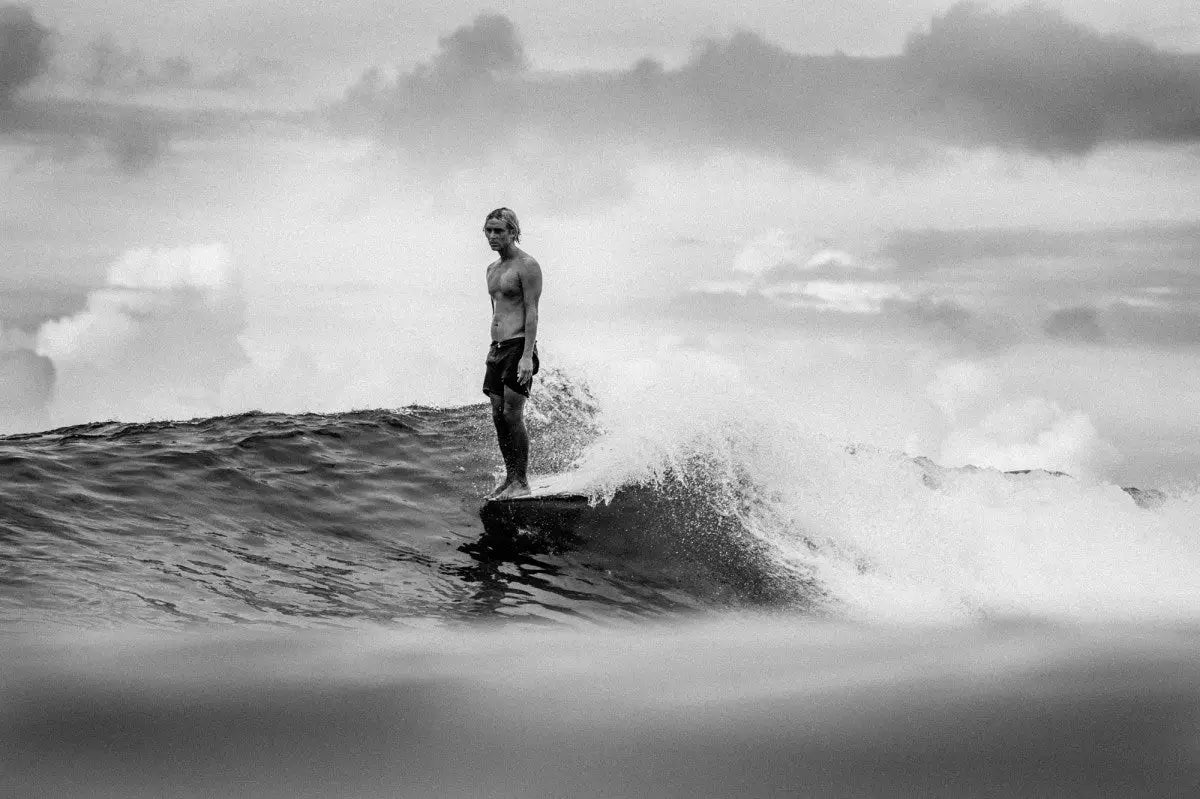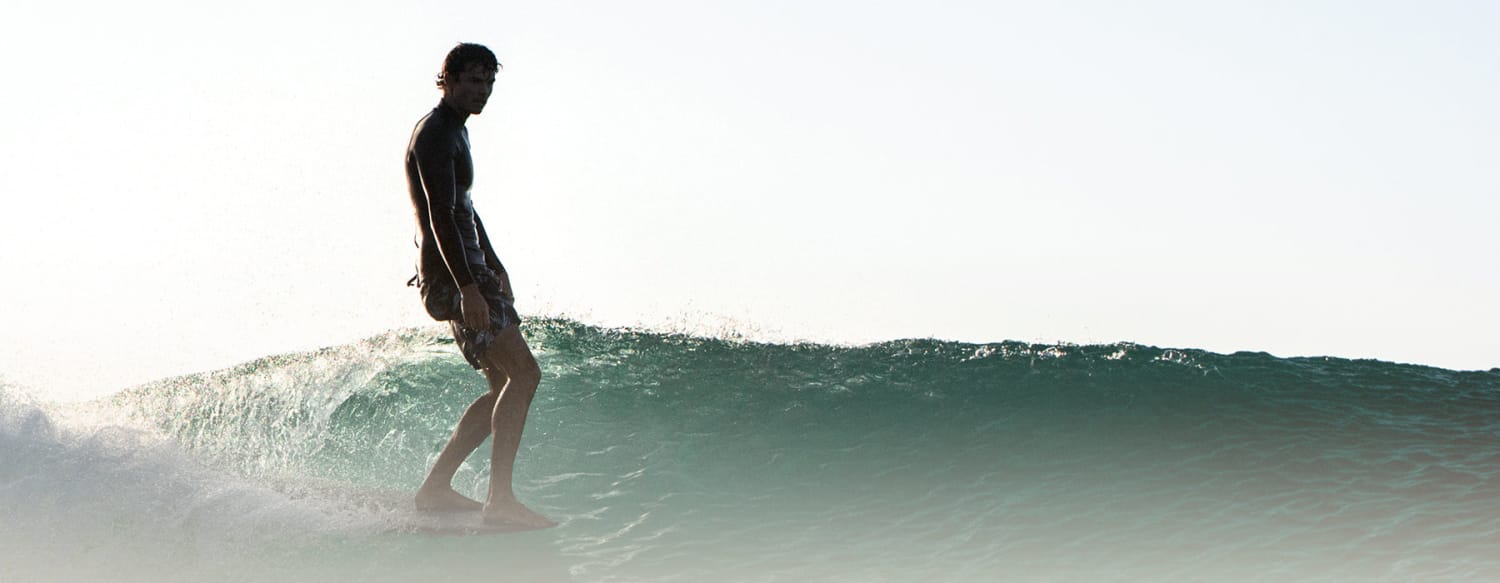Understanding Fin Options for Longboards
Fin Options for Longboards
Six decades ago, there was no such thing as “longboarding”—there was just surfing, and people did it on boards we would now consider “longboards.” Then the Shortboard Revolution came along and completely changed surfing. Suddenly there were shortboards and longboards—and for a while, longboards sort of fell out of favor.

Photo Credit: Ellis
In the 1990s, longboarding made a resurgence—but it looked very different than it had in the 1960s. Instead of heavy, single-fin boards, the longboards that were surfed on the world tour were lightweight, high-performance boards with modern design elements that allowed them to be surfed like oversized shortboards. These boards dominated longboarding for a decade, but then around the year 2000 traditional logging came back into fashion—and suddenly longboarding involved a huge spectrum of boards and riding styles, from modern, high-pro longboards to traditional logs and noseriders, and everything in between.
Today, longboarding can no longer be categorized as a single sub-genre of surfing. Instead, it has its own sub-genres, including esoteric shapes like gliders and oversized keel-fin fish, in addition to traditional noseriders, involvement logs, and the ubiquitous high-pro longboard. And as you’d expect, each of these different types of boards uses different types of fins. Some boards need stability and drive, while others need release—it all depends on what and how you are riding. That being said, there are four basic categories of longboard fins, which we will cover today.

Pivot/Noserider: Pivot fins are the classic option for dedicated noseriders and logs, which are typically built to go slow and support extended tip time, but at the expense of aggressive turning and maneuverability. Noseriders are built for noseriding, and not much else, so they tend to be heavy, have soft rails, and have a lot of rocker in the tail, but very little in the nose—none of which are advantageous for doing turns. Likewise, the pivot fin that you will see on many noseriders is built more for stability than maneuverability. Pivot fins tend to be long and upright, with very little rake (and sometimes none at all). These fins serve as an anchor for the back of the board while you are on the nose, keeping the tail from spinning out when all of your weight is up front. Of course, there wide, non-tapered shape means that they are pretty difficult to maneuver, and it often takes a bit of grunt to get boards with pivot fins to turn. In fact, that’s where the name “pivot” comes from—because turns on boards with these fins tend to be more of a pivot than a carve. That being said, pivot fins provide the most stable ride when you are on the nose, so if hanging 10 is your goal, this is the go-to design.
Rake/Noserider: While an upright fin provides the most stability for noseriding, you actually get quite a bit of stability from any fin that is long enough to keep the tail from spinning out (typically around 9 to 10 inches or longer)—and not everyone has the power or desire) to surf a stiff, unwieldy board with a huge pivot fin on it. This is where raked fins come in. Typically wide at the base and then tapered toward the tip, these fins sweep back toward the tail so that the tip is a few inches behind the trailing edge of the base (we call this sweep “rake”). Raked fins tend to allow for easier and more aggressive turning, but if they are long and stiff enough (typically made of fiberglass), they still provide a smooth, stable ride when you are on the nose. In essence, these raked single fins are a compromise between a pure noserider and a board that is a bit more maneuverable—but they still provide a traditional, logging feel.
All Around: Although not technically a longboard “classification,” all around longboards are exactly what they sound like—longboards that are built to do a bit of everything. They are usually a bit lighter than traditional logs and have sharper “down” rails in the tail, which makes them more maneuverable. They have a bit more rocker in the nose as well, allowing them to be surfed in slightly larger, hollower waves. But at the same time, they can still support noserides. An all around longboard like this needs all around fins, and that is typically accomplished with a 2+1 setup. A 2+1 involves a single-fin box in the center and side boxes for smaller, modern side fins (sometimes called “sidebites”). The center fin provides some stability when on the nose (albeit typically less than on a dedicated noserider, as center fins on all around boards tend to be a bit shorter, in the 8- to 9-inch range), while the side fins provide drive and speed, as well as more control during aggressive turns off the bottom and vertical snaps off the top. Most beginner and “modern” longboards will feature this type of fin configuration.
Pure Performance: On pure performance longboards, the goal is to rip airs, 360s, and huge snaps, and even ride deep in the barrel—similar to how you’d surf a shortboard. Because the emphasis is on aggressive turns rather than noserides, a longer center fin is actually a hindrance instead of an advantage. Thus, pure performance longboards will often have a 2+1 setup with a shorter, cutaway center fin (typically in the 6- to 7.5-inch range) and standard side fins. Even further along the performance spectrum is a longboard with a thruster setup featuring standard, 4.5-inch fins both on the sides and in the center, such as Kanoa Dahlin’s K2D2 or the Hawaiian South Shore HP model. These configurations will tend to spin out when noseriding through technical sections, but they allow for cutting-edge, high-pro shredding, even on a longboard.